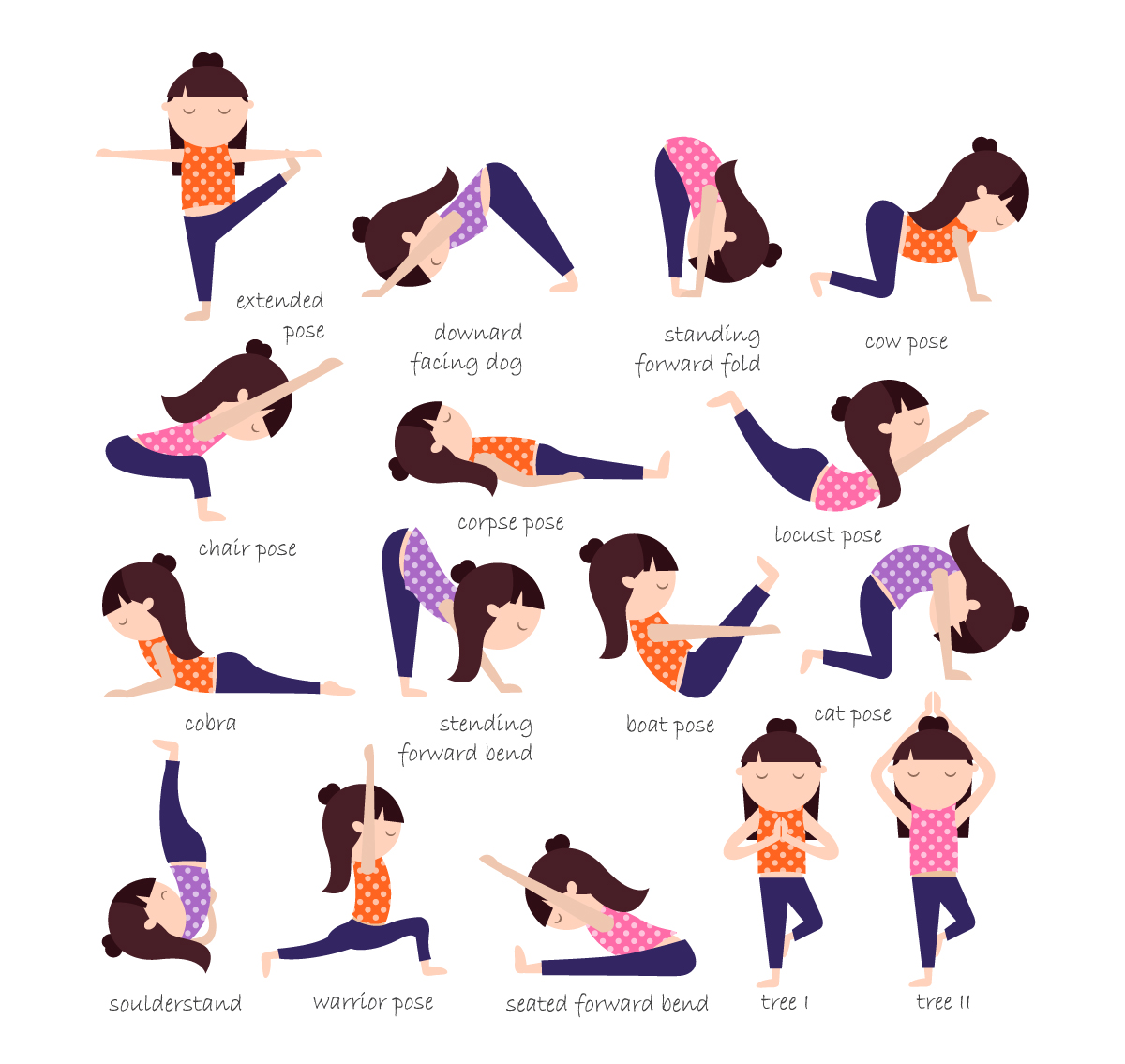Table of Contents
After you do the sun salutations, there are then three animal-inspired poses, cat, cobra, and fish.
- The cat pose (majarisana), also known as the cow and cat pose, involves getting down on all fours, first relaxing the back and looking up, like a cow, and then arching the back and looking down, like a cat. Curling and releasing the toes, as shown in the video linked at the end of this article, increases the relaxing effect of the exercise.
- The cobra pose (bhujangasana), also illustrated in a video linked at the end of this article, compresses and releases the back muscles, leg muscles, feet, and pubic muscles to intense relaxation. Don't attempt this exercise if you have back problems.
- The fish pose (matsyasana) is performed on the back to open the heart and throat at the same time. it relieves anger and irritability while it relieves abdominal tension and bloat.

Yoga nidra, a guided meditation intended to keep the mind on the boundary between wakefulness and sleep, is performed in savasana, flat on one's back. Savasana would seem to be the easiest of all yoga poses, but in some ways it can be the hardest. Also known as the corpse pose, savasana challenges the body to relax.
READ Ten Surprising Health Benefits of Yoga for Men
What kinds of changes can women who do yoga expect in their menstrual symptoms?
- Yoga tends to make symptoms more "menstrual" than "premenstrual." In one study, women who did not do yoga had their most severe symptoms the day before they had their periods, but women who did yoga had milder symptoms and not until the second day of their periods.
- Yoga is especially useful for relieving belly bloat, breast tenderness, abdominal cramps, and cold sweats.
- Women who do yoga take 50 percent fewer days off work due to menstrual issues.
- Women who do yoga need fewer pain relievers (which can cause upset stomach and interfere with the renewal of protective membranes in joints).
- Women who get into the habit of doing yoga tend to pick up other exercise activities.
- Women who do yoga don't have shorter menstrual periods (they still average five or six days), but their menstrual cycles become much less variable, that is, they have fewer 20-day or 40-day cycles, and their cycles tend to reliably last 28 days.
- Going to a yoga class helps women connect with other women who understand their symptoms and who can share learning experiences.
READ Anti-Gravity Yoga: Turn Yoga On Your Head
Women who have heavy work loads on the job and at home can be understandably reticent to sign up for a yoga class. However, the benefits of doing yoga tend to justify the time spent. Every eight hours spent in class tends to result in four fewer hours of sick leave. It can be hard to make time for yoga at first, but well worth the effort to put in the schedule.
- Tsai SY. Effect of Yoga Exercise on Premenstrual Symptoms among Female Employees in Taiwan. Int J Environ Res Public Health. 2016 Jul 16.13(7). pii: E721. doi: 10.3390/ijerph13070721. PMID: 27438845.
- Yang NY, Kim SD. Effects of a Yoga Program on Menstrual Cramps and Menstrual Distress in Undergraduate Students with Primary Dysmenorrhea: A Single-Blind, Randomized Controlled Trial. J Altern Complement Med. 2016 Sep.22(9):732-8. doi: 10.1089/acm.2016.0058. Epub 2016 Jun 17. PMID: 27315239.
- Photo courtesy of freepik.com
- Photo courtesy of freepik.com
- Infographic by SteadyHealth.com
- Photo courtesy of
- https://www.youtube.com/watch?v=CncfOxdfnKc (Surya Namaskara instruction in English)
- https://www.youtube.com/watch?v=kS4YA1z8fsc (Surya Namaskara instruction in Hindi but with excellent photographic illustrations)
- www.youtube.com/watch?v=kqnua4rHVVA
- www.youtube.com/watch?v=HE1aplwtKrs
- www.youtube.com/watch?v=tME_Z88W9c4
- www.yogajournal.com/article/beginners/corpse-pose/

